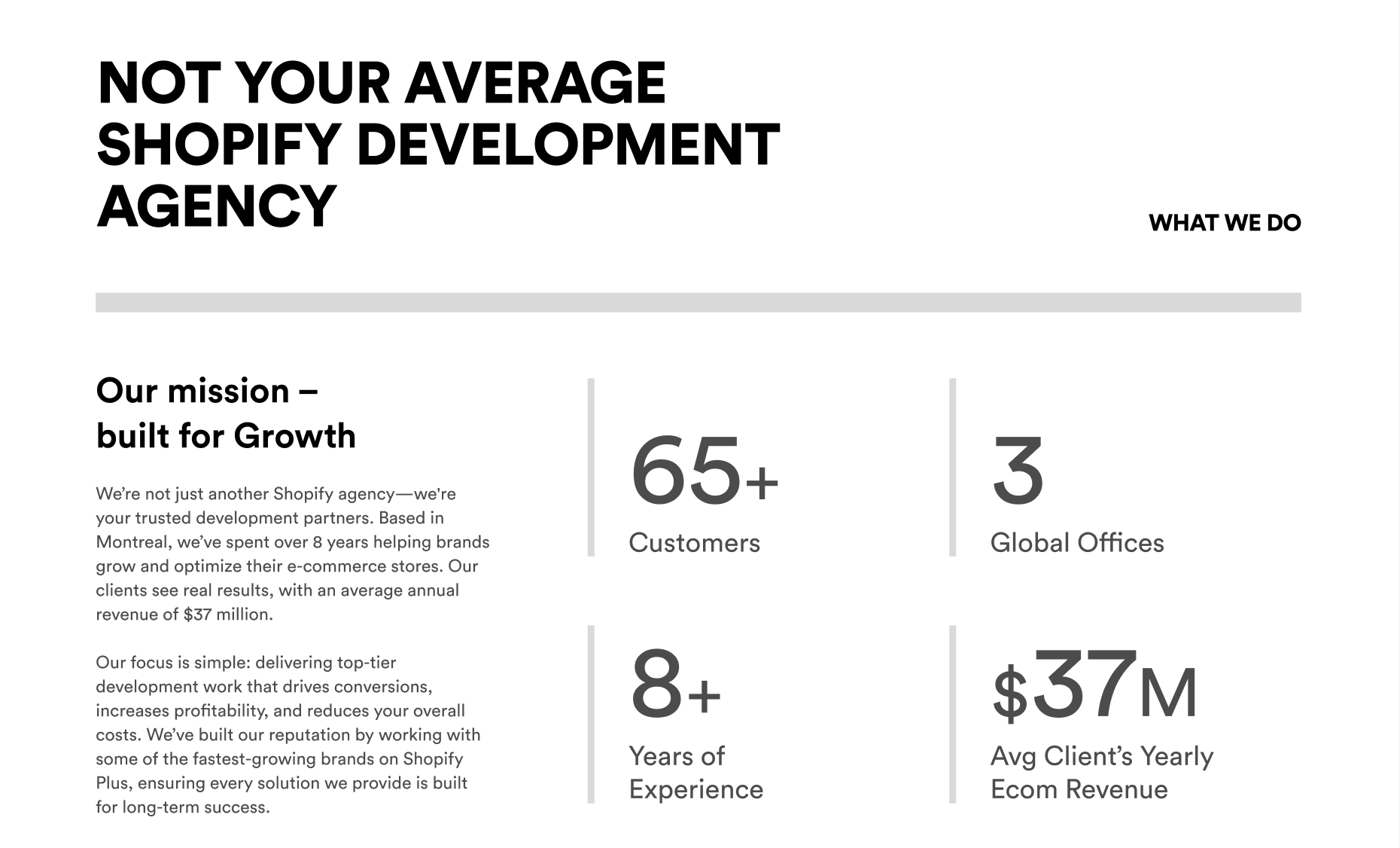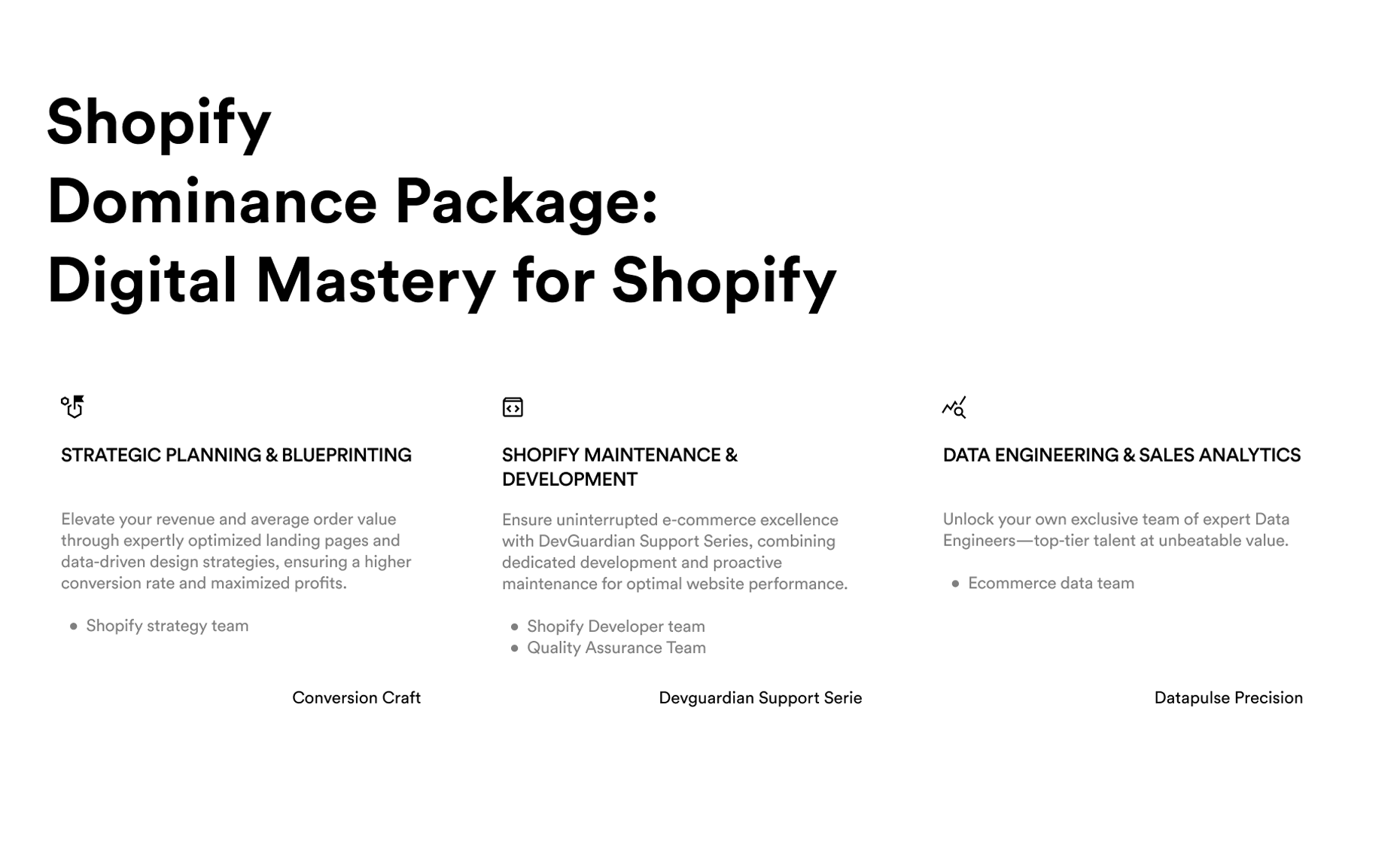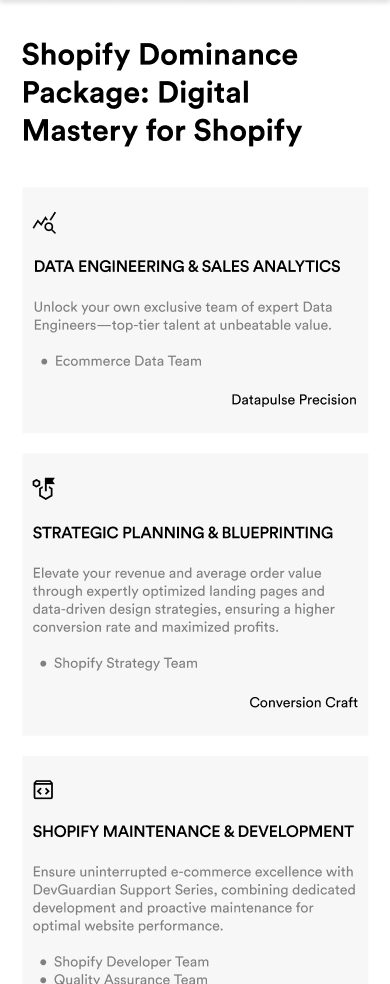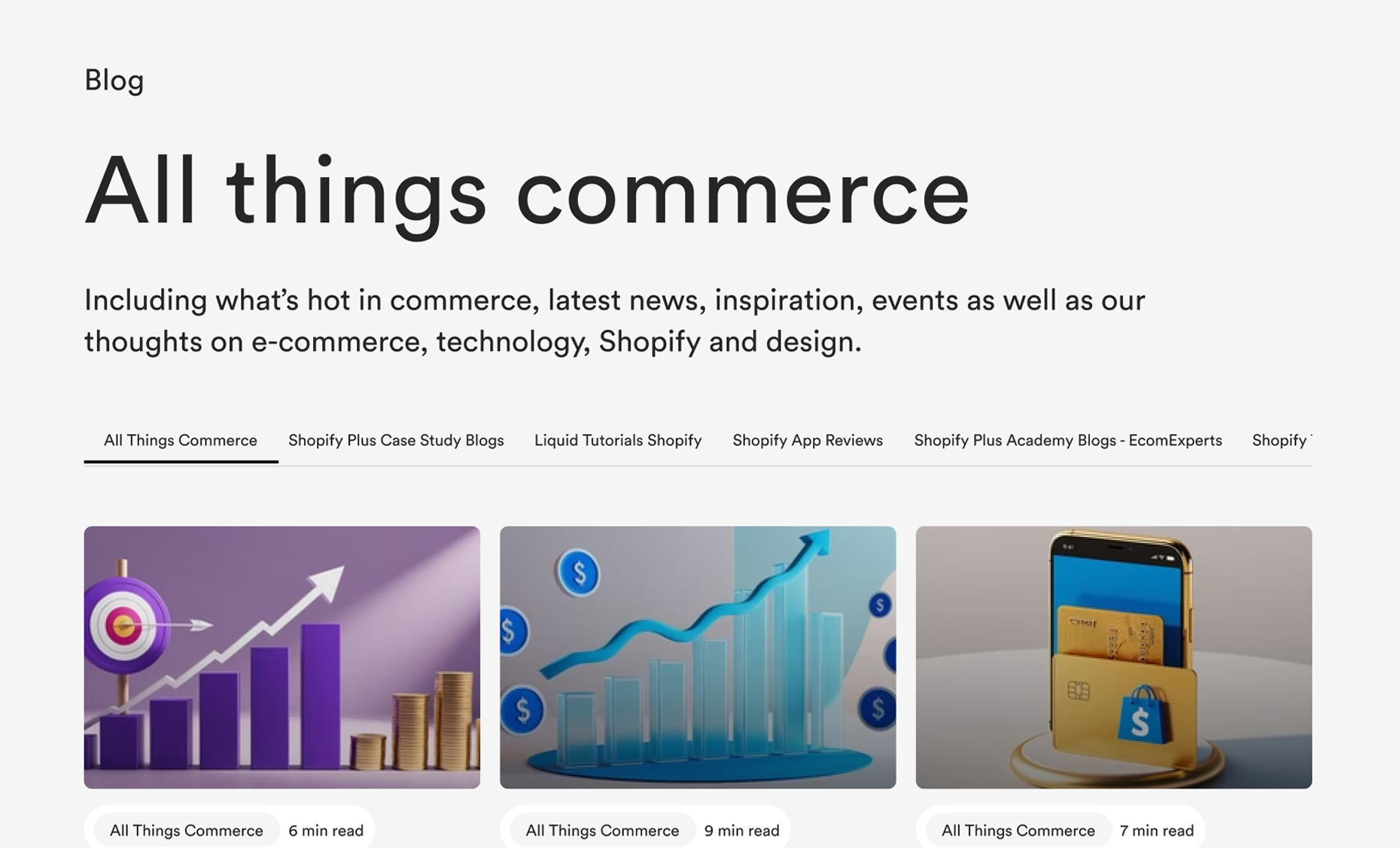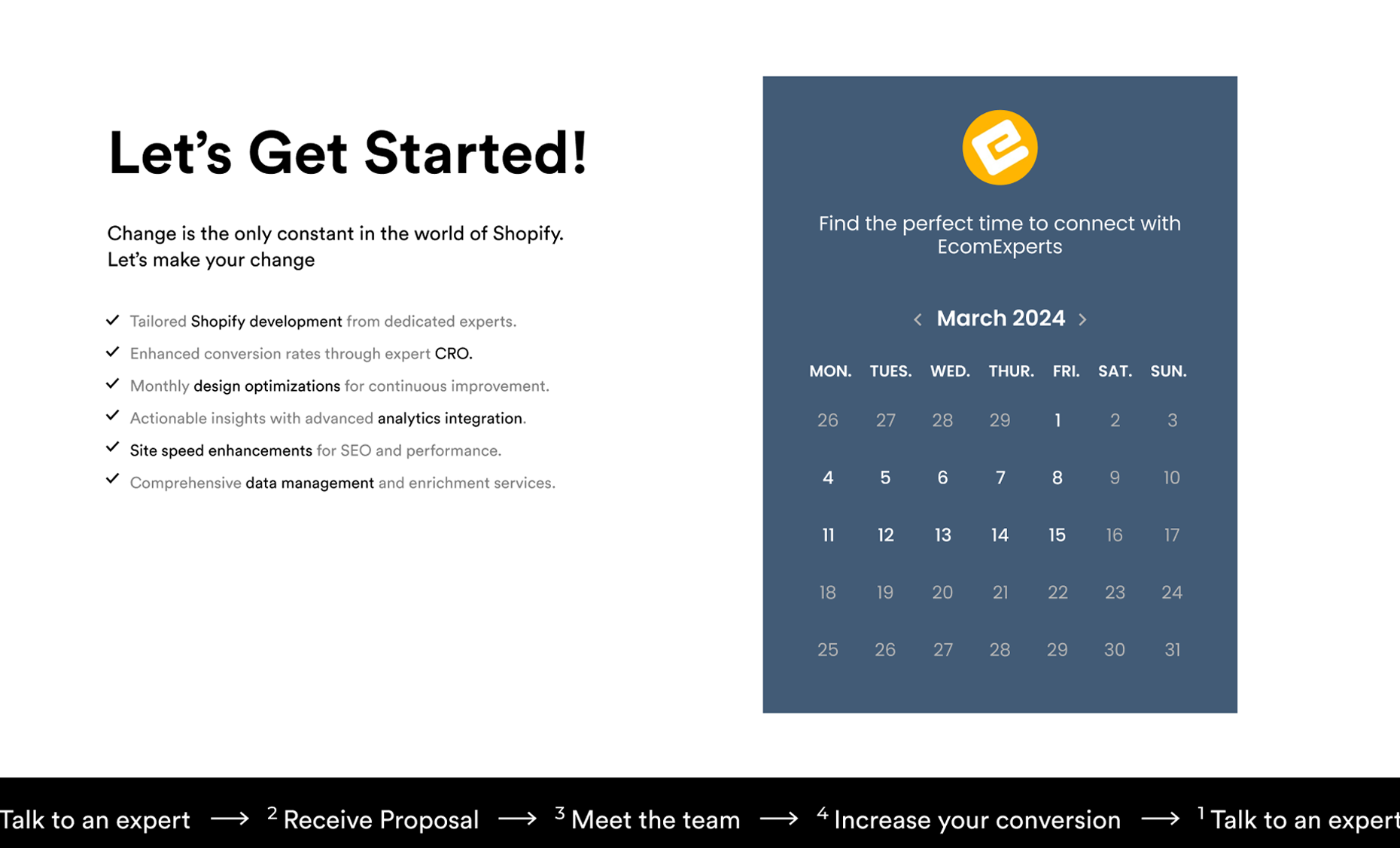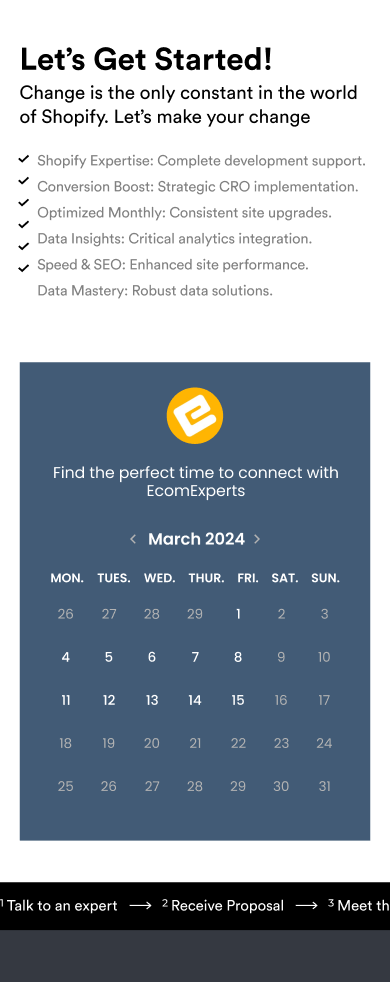Imagine a world where your Shopify store isn’t just another online shop, but a powerhouse of personalized, lightning-fast customer experiences. That’s the promise of headless commerce—an approach that’s changing the face of e-commerce as we know it.
If you’ve ever felt constrained by the limitations of traditional platforms, you’re in for a treat. This guide is your ticket to understanding headless commerce solutions and how they can elevate your business to new heights.
Buckle up, because things are about to get exciting!
Understanding Headless Commerce
Before we dive into the details, let’s clarify what we’re talking about. So, what is headless commerce? No need to overcomplicate things—it’s actually pretty straightforward. Headless commerce is about decoupling the front-end (the part your customers see) from the back-end (the engine running your store). This setup gives you the freedom to mix and match the best tools and technologies to create a solution tailored to your business needs.
Imagine having the ability to deliver highly customized, blazing-fast experiences across all devices—without the constraints of a one-size-fits-all platform. That’s the power of headless commerce, and it’s why more and more businesses are making the switch.
Defining Headless Commerce
Let’s keep it simple: headless commerce is the separation of the front-end and back-end components of an e-commerce system. This separation allows you to choose the best tools for each part, resulting in a highly customizable and scalable solution that can evolve as your business grows.
The Evolution of E-commerce to Headless Commerce
E-commerce has come a long way since its inception. We've witnessed a rapid evolution of technology and customer expectations, leading us to embrace the headless commerce revolution. Traditional e-commerce platforms served us well, but they often limited our creativity and flexibility.
Today's consumers expect seamless experiences across various devices, whether it's a laptop, a smartphone, or even a smartwatch. Headless commerce paves the way for delivering these experiences by enabling you to craft tailor-made solutions using best-in-class tools.
Benefits of Headless Commerce
Now that we have an overview of what headless commerce is, let's explore the incredible benefits it offers:
- Flexibility and Scalability: With headless commerce, you have the freedom to choose the best tools for each component of your e-commerce system. Need a lightning-fast React.js frontend? No problem! Want to integrate a third-party CRM? Easy peasy! The power to scale and adapt is in your hands.
- Enhanced Performance: By decoupling the front-end and back-end, headless commerce allows for improved performance, resulting in faster page load times and a smoother user experience. Say goodbye to frustrating load times and hello to happy customers!
- Omnichannel Capabilities: In today's digital landscape, it's essential to be where your customers are. Headless commerce enables you to seamlessly deliver your products and services across multiple touchpoints, whether it's a website, mobile app, smart speaker, or even a virtual reality experience.
- Future-Proof Your Business: By embracing headless commerce, you're future-proofing your business. As new technologies and trends emerge, you'll have the flexibility to adapt and stay ahead of the curve. It's like having a crystal ball for your e-commerce success!
But wait, there's more! Let's dive deeper into the benefits of headless commerce and explore how it can revolutionize your e-commerce strategy.
- Improved Customization: With headless commerce, you have the power to create a fully customized and unique user experience. Say goodbye to cookie-cutter templates and hello to a website that truly reflects your brand identity. Whether it's designing a visually stunning homepage or implementing a personalized recommendation engine, the possibilities are endless.
- Streamlined Development Process: One of the key advantages of headless commerce is its ability to streamline the development process. With a decoupled architecture, front-end and back-end teams can work independently, resulting in faster development cycles and reduced time to market. This means you can quickly respond to market trends and customer demands, giving you a competitive edge.
As you can see, headless commerce is not just a buzzword; it's a game-changer for e-commerce businesses. By embracing this innovative approach, you can unlock a world of possibilities and take your online store to new heights.
So, what are you waiting for? It's time to go headless and revolutionize your e-commerce strategy!
Key Components of Headless Commerce
Now that we understand the transformative power of headless commerce, let’s dive into the engine that makes it all work. The key components of headless commerce are what set it apart from traditional e-commerce models, providing the flexibility and performance that modern businesses need to thrive.
Whether you’re running a Shopify store or managing a large-scale online marketplace, understanding these components will help you leverage headless commerce to its full potential.
APIs in Headless Commerce
At the core of headless commerce are APIs (Application Programming Interfaces), which act as the glue that holds everything together. Think of APIs as the bridge between your front-end and back-end systems, allowing them to communicate and share data seamlessly.
This is where the magic happens—APIs enable your Shopify store’s user interface to fetch data from the back-end without needing to reload the entire page, ensuring a smooth and responsive shopping experience.
But it doesn’t stop there. APIs in headless commerce also open the door to endless possibilities for integration. Want to add a new payment gateway or integrate a cutting-edge marketing automation tool? APIs make it easy to plug in new services without disrupting your existing setup.
This flexibility is a game-changer, allowing you to build a tailored e-commerce ecosystem that perfectly aligns with your business goals.
Frontend and Backend Separation
One of the defining features of headless commerce is the clear separation between the front-end and back-end components. In a traditional e-commerce setup, these two layers are tightly coupled, which often limits your ability to innovate and scale. But with headless commerce, you have the freedom to choose the best tools for each layer independently.
Imagine having a blazing-fast front-end built with React.js, optimized to deliver stunning visuals and a seamless user experience. Meanwhile, your back-end, powered by a robust system like Node.js, handles all the heavy lifting—managing inventory, processing payments, and maintaining customer records.
This separation doesn’t just enhance performance; it also boosts security. By isolating the presentation layer from the business logic, you can better protect sensitive data and adapt to new technologies without overhauling your entire system.
With headless commerce, you’re not limited to a single stack. You can mix and match technologies, ensuring that every component of your e-commerce platform is optimized for maximum performance and flexibility.
Whether you’re integrating with third-party services or expanding into new markets, the separation of front-end and back-end layers in headless commerce gives you the agility to pivot quickly and stay ahead of the competition.
Microservices and Their Role
Microservices are the building blocks of headless commerce, and they’re nothing short of game-changing for your Shopify store. Imagine each microservice as a specialized player on your e-commerce team, each one with a specific role to play.
One might handle inventory, another takes care of customer accounts, and yet another manages your checkout process. Instead of relying on a monolithic system where everything is tied together, microservices allow you to break down your e-commerce operations into smaller, independent units that can work together seamlessly.
Why is this a big deal? Because with microservices, you’re not tied down to a single, inflexible system. You can scale and evolve each component as your business grows or as new technologies emerge. It’s like having a custom-built machine that you can upgrade one part at a time without having to shut down the entire operation.
Plus, if one microservice needs to be updated or fixed, you can do that without impacting the rest of your e-commerce ecosystem. That kind of agility is crucial in today’s fast-paced e-commerce world, where being able to adapt quickly is often the difference between staying ahead of the curve or falling behind.
And here’s the kicker—microservices also enable rapid development and deployment. Since each microservice operates independently, you can roll out new features, scale services, or even replace components with minimal disruption.
This modular approach means that your e-commerce platform is not just built to last but built to thrive in a constantly changing digital landscape. So, if you’re looking to future-proof your business, microservices in headless commerce are the way to go.
Choosing the Right Headless Commerce Platform
Alright, you’ve got the basics down, and now it’s time to take the next step: choosing the right headless commerce platform. This decision is critical because it’s the foundation on which your entire e-commerce strategy will be built. You want something that not only meets your needs today but will grow and scale with you as your business evolves.
Factors to Consider
Before you dive in, let’s talk about what you should be looking for:
- Scalability and Customizability: Your business isn’t static, so why should your e-commerce platform be? Look for a headless commerce platform that can scale as your business grows. You need something that offers the flexibility to customize your store exactly the way you envision it. Whether that means creating a unique customer experience or integrating with specific third-party tools, the platform should empower you to make your vision a reality.
- Developer-Friendly: If you’re going headless, your developers are going to be key players in the process. Make sure the platform you choose is developer-friendly. That means robust APIs, extensive documentation, and an active developer community. The easier it is for your dev team to work with the platform, the faster and smoother your implementation will be. And in the fast-paced world of e-commerce, time is money.
- Integration Capabilities: Your headless commerce platform isn’t an island—it needs to work well with others. Whether you’re integrating a CRM, an ERP, or a marketing automation tool, make sure the platform plays nice with the systems you already use or plan to use in the future. Seamless integration is key to ensuring that your e-commerce operations run smoothly without any hiccups.
- Support and Training: Let’s face it, no matter how great a platform is, you’re going to need some help along the way. That’s why choosing a platform with excellent support and training resources is crucial. Whether you need troubleshooting assistance or want to upskill your team, knowing that you’ve got support just a click away can make all the difference.
By weighing these factors carefully, you’ll be well on your way to selecting a headless commerce platform that’s not just a good fit for today but one that will grow with you, adapt with you, and help you crush it in the e-commerce world.
Comparing Popular Headless Commerce Platforms
Alright, now that we’ve covered what to look for in a headless commerce platform, let’s dive into some of the big players in the game. You’ve got options, and each platform brings something unique to the table, so it’s all about finding the one that aligns with your goals.
-
Shopify: Shopify is not just a powerhouse in the traditional e-commerce space; Shopify is also making waves with its headless commerce solutions. The beauty of Shopify lies in its flexibility. Whether you’re running a small shop or a massive enterprise, Shopify offers a robust and developer-friendly environment that’s hard to beat.
Plus, with its extensive app marketplace, you can customize your store to fit your exact needs. Shopify makes headless commerce accessible, so you can focus on scaling your business and delivering top-notch customer experiences. -
BigCommerce: Another heavyweight in the headless commerce arena is BigCommerce. This platform is all about combining flexibility with scalability, making it a solid choice for businesses ready to grow. BigCommerce shines with its seamless integrations and comprehensive API documentation, which means your developers will have all the tools they need to create custom, engaging shopping experiences.
Whether you’re focused on enhancing your mobile presence or expanding into new markets, BigCommerce gives you the stability to do it all while staying nimble. - Moltin: If you’re looking for speed and simplicity, Moltin might be your go-to. Moltin focuses on making the implementation process as smooth as possible with a range of pre-built components and APIs. This platform is perfect for businesses that need to get their headless commerce solutions up and running quickly without sacrificing quality. Moltin allows you to rapidly build and deploy, giving you the agility needed to keep up in today’s fast-paced e-commerce landscape.
These platforms are just the tip of the iceberg when it comes to headless commerce. Each one has its strengths, and the best choice for your business will depend on your specific needs and vision.
Remember, selecting the right headless commerce platform is a decision that will have a long-lasting impact on your business’s growth and success, so take the time to research, compare, and test them out before making your move.
Implementing Headless Commerce
Alright, you’ve picked your headless commerce platform—nice move! Now comes the fun part: actually making it happen. Implementing headless commerce might seem like a beast of a task, but don’t sweat it. We’re going to break it down step by step so you can transition smoothly and start reaping the benefits.
Steps to Transition to Headless Commerce
1. Set Clear Objectives:
First things first, you need to define what success looks like for your headless commerce journey. What are your goals? Faster site speed? Better user experience? Seamless omnichannel integration? Whatever it is, get crystal clear on your objectives. This will keep you on track and make sure every decision you make is driving towards those goals.
2. Plan Your Architecture:
Think of this like designing the blueprint for your dream home. You’ve got to plan out the structure before you start building. In headless commerce, that means mapping out the microservices you’ll need and figuring out how they’ll all fit together. Whether it’s a blazing-fast frontend framework or a robust backend system, plan your architecture with scalability and flexibility in mind.
3. Choose the Right Tools:
Now that you’ve got your architecture in place, it’s time to pick your tools. The beauty of headless commerce is that you can choose the best of the best for each part of your system. Need a dynamic frontend experience? Maybe React or Vue.js is your go-to. Want a powerhouse backend? Look into Node.js or Laravel. The key is to match the tools with your specific needs and goals.
4. Migrate and Test:
Here’s where the rubber meets the road. Start migrating your existing data to your new headless setup. But don’t rush—this is where testing becomes your best friend. You want to catch any issues before your customers do. Test everything thoroughly, from load times to transaction processing, to make sure it’s all running like a well-oiled machine before you go live.
5. Iterate and Improve:
Once you’ve launched, the journey doesn’t stop there. In fact, it’s just beginning. Monitor how everything is performing, gather feedback, and be ready to make tweaks and improvements. Headless commerce is all about flexibility, so use that to your advantage. Keep refining the experience to keep your customers happy and your business growing.
Challenges and Solutions in Implementation
Alright, so you’re pumped to dive into headless commerce, but let’s not sugarcoat it—there are some hurdles you’ll need to clear along the way. The good news? For every challenge, there’s a solution. Let’s break it down.
Challenge 1: Integration ComplexityWhen you’re piecing together different systems—each handling a crucial part of your e-commerce ecosystem—it can feel like trying to solve a jigsaw puzzle with a few pieces missing. The complexity of integrating these systems, ensuring they communicate seamlessly, and maintaining smooth operations can be daunting.
Solution:The key here is choosing a headless commerce platform that comes with robust, well-documented APIs and support. Platforms like Shopify are known for their extensive documentation and active community, making it easier to connect the dots between your frontend and backend.
If you’re still feeling overwhelmed, consider bringing in a team like Ecom Experts to guide you through the integration process. They can help streamline everything, from setting up APIs to ensuring that your systems talk to each other without a hitch.
Challenge 2: Developer SkillsHeadless commerce demands a skilled team to build and maintain it. The flexibility and customization it offers are incredible, but they require developers who know what they’re doing. This isn’t your typical drag-and-drop website builder; it’s a more complex environment that needs expertise.
Solution:Invest in your team. Provide the necessary training to get your developers up to speed on the latest technologies and best practices in headless commerce. If you don’t have the resources in-house, consider partnering with a specialized agency or bringing in consultants who have a proven track record in headless commerce.
Agencies like Ecom Experts specialize in Shopify Plus and can bring that high level of expertise to your project, ensuring it’s done right the first time.
Challenge 3: Performance OptimizationWith great power comes great responsibility—especially when it comes to performance. A headless setup can be lightning-fast, but only if you’re vigilant about optimization. If you’re not careful, the complexities of a decoupled system can slow things down instead of speeding them up.
Solution:Performance is a game of continuous improvement. Make sure you’re leveraging every tool in the box: caching, CDNs, and optimized images and scripts. Regularly monitor your site’s performance using tools like Google PageSpeed Insights or GTmetrix, and be ready to make adjustments.
Speed is critical in e-commerce; a delay of even a second can lead to lost conversions. Stay on top of your game by continuously optimizing your setup.
These challenges might seem like big mountains to climb, but with the right strategy and resources, they’re totally manageable. The rewards of headless commerce—like flexibility, scalability, and an unbeatable user experience—far outweigh the bumps in the road. Plus, remember this isn’t a one-and-done deal. Implementing headless commerce is an ongoing journey of improvement.
As your business grows and evolves, so will your headless setup. Keep an eye on emerging trends and technologies, and stay proactive to ensure your business remains ahead of the curve.
By embracing these challenges head-on, you’re setting yourself up for long-term success in the ever-competitive world of e-commerce.
Headless Commerce in 2024
So, you've got a handle on headless commerce, and you're already seeing the potential, right? But let's not stop here. Let’s take a glimpse into the future and see where this game-changing approach is headed.
Emerging Trends in Headless Commerce
The digital landscape is evolving faster than ever, and headless commerce is right at the forefront of this transformation. Here are some emerging trends that are set to redefine how we think about e-commerce:
-
AI-Powered Personalization:
Artificial Intelligence (AI) is becoming the secret sauce for delivering highly personalized shopping experiences. Imagine this: AI-driven algorithms that learn customer behavior so well, they can predict what products your customers will want before they even know they want them. We're talking about a whole new level of customer engagement—one that's hyper-personalized and drives serious loyalty.
-
Voice Commerce:
Voice assistants like Alexa, Siri, and Google Assistant are no longer just for setting reminders or playing your favorite tunes. They’re transforming into powerful shopping tools. Picture your customers placing an order through a simple voice command while they’re cooking dinner. The convenience factor here is off the charts, and it’s something that’s going to be huge in the coming years.
-
AR and VR Experiences:
Augmented Reality (AR) and Virtual Reality (VR) are turning the online shopping experience into something truly immersive. Customers will be able to see how a piece of furniture looks in their living room before buying it or try on clothes virtually. This isn’t sci-fi—it’s happening now, and it’s only going to get better. These technologies are set to boost engagement and conversion rates by creating shopping experiences that are both fun and functional.
These trends are just scratching the surface. As technology continues to evolve, we can expect headless commerce to lead the charge in delivering innovative, future-proof e-commerce experiences.
How Headless Commerce is Shaping the Future of Retail
Headless commerce isn’t just another buzzword—it’s a transformative force that's reshaping the retail landscape as we know it. By leveraging the flexibility and scalability of headless architecture, businesses are positioning themselves to not just survive but thrive in the rapidly changing digital world.
One of the standout advantages of headless commerce is its ability to deliver a seamless experience across various devices and platforms. Whether your customers are shopping via a mobile app, smartwatch, or even a voice assistant, headless commerce ensures that they enjoy a consistent, personalized experience every time.
But it’s not just about today’s technology—it’s about being ready for tomorrow’s. Headless commerce allows businesses to innovate at breakneck speed. Want to test a new feature? Roll it out on the front end without having to reconfigure the entire back end. Want to pivot quickly to meet new customer demands? Headless commerce makes it easier to adapt without skipping a beat.
With headless commerce, the sky’s the limit. Whether you’re running a massive e-commerce empire or just starting out, headless commerce gives you the tools to craft unique, engaging experiences that will keep your customers coming back for more.
Headless commerce is more than just a trend—it’s the next big leap in e-commerce. And there’s no better platform to take that leap with than Shopify. With its robust ecosystem, developer-friendly environment, and virtually limitless possibilities, Shopify is the ideal partner for your headless commerce journey.
Ready to take your e-commerce game to the next level? The future is headless, and the opportunities are endless. Embrace headless commerce with Shopify and watch your business soar to new heights.
Happy selling!
FAQs
Q1. What is headless commerce, and how does it work?
A1. Answer: Headless commerce refers to the decoupling of the front-end (presentation layer) from the back-end (commerce engine) of an e-commerce system. This separation allows for greater flexibility in creating custom user experiences and integrating various tools and technologies. The front-end communicates with the back-end via APIs, enabling seamless data exchange and a more personalized shopping experience.
Q2. What are the benefits of headless commerce for e-commerce businesses?
A2. Answer: Headless commerce offers several benefits, including enhanced flexibility, scalability, and performance. It allows businesses to deliver faster page load times, better mobile experiences, and seamless omnichannel integrations. Additionally, it future-proofs your e-commerce operations by enabling easy adoption of new technologies and trends.
Q3. How does headless commerce improve website performance?
A3. Answer: By separating the front-end and back-end, headless commerce allows each component to be optimized independently. This leads to faster page load times, improved SEO, and a smoother user experience. Tools like Content Delivery Networks (CDNs) and caching can further enhance performance, resulting in higher conversion rates and customer satisfaction.
Q4. Is headless commerce suitable for my Shopify store?
A4. Answer: Headless commerce can be an excellent fit for Shopify stores, especially those looking to scale and offer unique customer experiences. It is particularly beneficial for businesses that require extensive customization, complex integrations, or wish to deliver a consistent experience across multiple channels.
Q5. What are the challenges of implementing headless commerce on Shopify?
A5. Answer: Implementing headless commerce can be complex, involving challenges such as integration difficulties, the need for skilled developers, and ongoing maintenance. However, with the right platform, such as Shopify Plus, and the support of an experienced Shopify Plus Agency like Ecom Experts, these challenges can be effectively managed.
Q6. How does headless commerce impact SEO?
A6. Answer: Headless commerce can positively impact SEO by improving site speed, mobile responsiveness, and content management flexibility. By allowing for more precise optimization of the front-end, businesses can enhance their search engine rankings and provide a better user experience, which is critical for SEO success.
Q7. Which headless commerce platforms are best for Shopify stores?
A7. Answer: Some of the top headless commerce platforms for Shopify stores include Shopify itself, which offers robust headless capabilities, BigCommerce for its flexibility and scalability, and Moltin for its ease of integration and rapid deployment. These platforms provide the tools and support needed to create a powerful headless commerce solution.




